Are you feeling overwhelmed by a legal complaint and unsure how to respond? Crafting the perfect letter can be a daunting task, but it doesn't have to be. This guide will provide you with a sample response letter that is clear, concise, and legally sound. Ready to take control of your situation? Let's dive in and explore how to effectively address that complaint together!
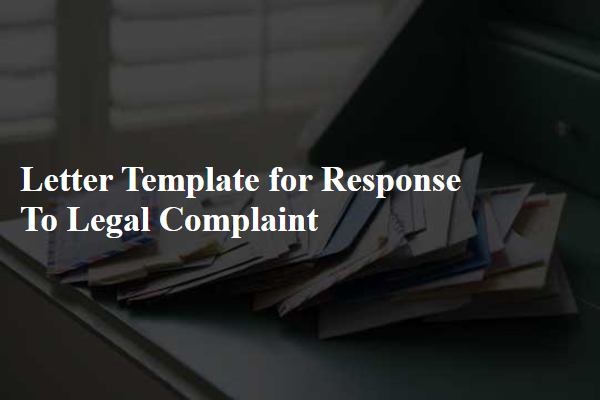
Accurate identification of parties involved.
Accurate identification of parties involved in a legal complaint is crucial for several reasons, particularly in legal proceedings, such as civil lawsuits in courts like the Superior Court of California. Correctly identifying the plaintiff, the individual or entity bringing the complaint, and the defendant, the individual or entity being accused, ensures clarity in the case. Essential details include the full legal names, addresses, and registration numbers of businesses, if applicable. Furthermore, the identification of any third-party witnesses or co-defendants can impact the proceedings. For instance, including parties like insurance companies or relevant stakeholders can facilitate resolution and streamline the legal process. Accurate party identification prevents complications that may arise from misrepresentation or ambiguity.
Clear statement of facts and background context.
In a legal context, a clear statement of facts essential for understanding the background of a complaint can include specific incidents, dates, and parties involved. For instance, a company named ABC Corp, established in 2005, faced a complaint filed on September 15, 2023, by former employee John Doe citing wrongful termination. The interplay of employment policies, particularly the Employee Handbook updated in January 2023, specifies grounds for termination, which are alleged to have been violated. This incident took place in New York City, where the company operates in the tech industry. John Doe's employment commenced on March 10, 2020, and his termination occurred on August 1, 2023, following a reported incident involving a feedback session where alleged harassment was discussed. Specific communications, including email correspondences dated July 25, 2023, outlined concerns about performance metrics that are now integral to this dispute. These details form the basis for understanding the complex interactions and motivations behind the legal complaint.
Legal defenses or justifications for actions.
In legal proceedings, respondents can utilize various defenses or justifications to address complaints effectively. Affirmative defenses, such as self-defense in criminal cases, provide explanations for actions that may otherwise be deemed unlawful. Statutes of limitations, which vary by jurisdiction and type of claim, can be invoked to argue that the legal complaint is filed too late, thus barring any recovery. Consent constitutes a defense in tort cases, indicating that the complainant agreed to the actions in question, such as in certain personal injury claims. Additionally, a claim of necessity could justify actions taken in emergency situations to prevent greater harm, as seen in various legal precedents. Lastly, the doctrine of comparative negligence assesses the degree to which each party contributed to the harm, potentially reducing liability based upon the complainant's own actions.
Specific request for relief or resolution.
A formal response to a legal complaint typically outlines the specific relief or resolution being sought. This response may include detailed information regarding the nature of the dispute, the parties involved, and any legal grounds for the claims. It should articulate the desired outcomes, such as monetary compensation, injunctive relief, or declaratory judgment, specifying any relevant statutes or case law that support the position. Additionally, references to evidence or documentation that may reinforce the claims should be included, ensuring clarity in the sought resolution. A comprehensive conclusion may reiterate the request, aiming to convey a firm stance while leaving room for potential negotiation.
Professional and respectful tone.
The process of responding to a legal complaint requires a thorough understanding of legal terminology and appropriate language. Effective communication is key, and precision is essential in reflecting professionalism and respect. In legal contexts, details such as the date of the complaint, the name of the court (such as the Superior Court of California), and specific case numbers should be included. For instance, a response must address allegations regarding breach of contract, clarifying terms (like payment timelines) and responsibilities. Additionally, referencing settlement proposals may illustrate a willingness to resolve disputes amicably, while also staying compliant with legal frameworks to avoid potential ramifications, like default judgments. Documentation must be meticulously prepared, and all claims should be substantiated with evidence to robustly counter the complaint.
Letter Template For Response To Legal Complaint Samples
Letter template of request for extension in response to legal complaint.
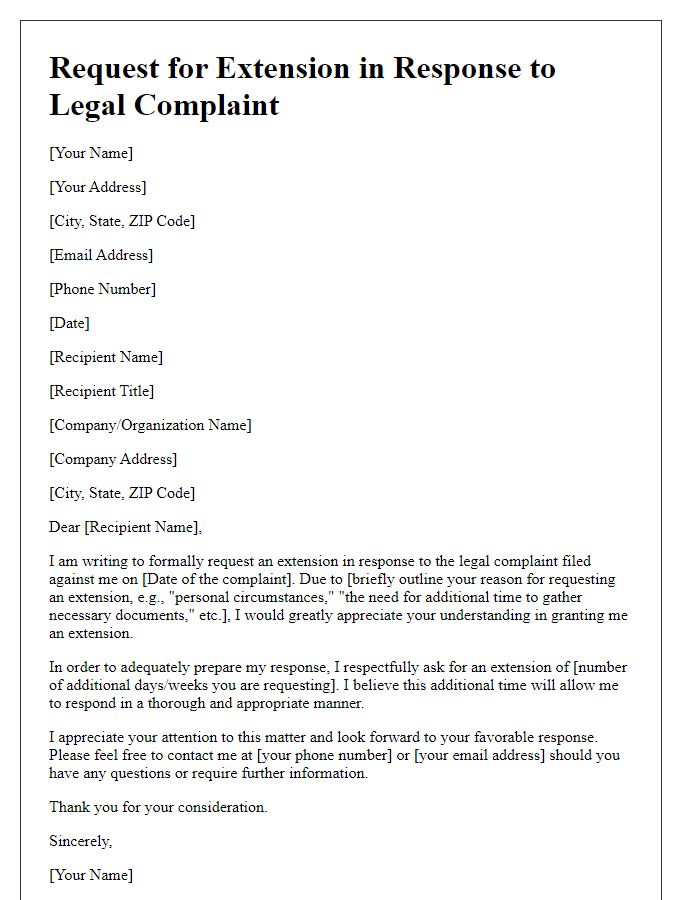

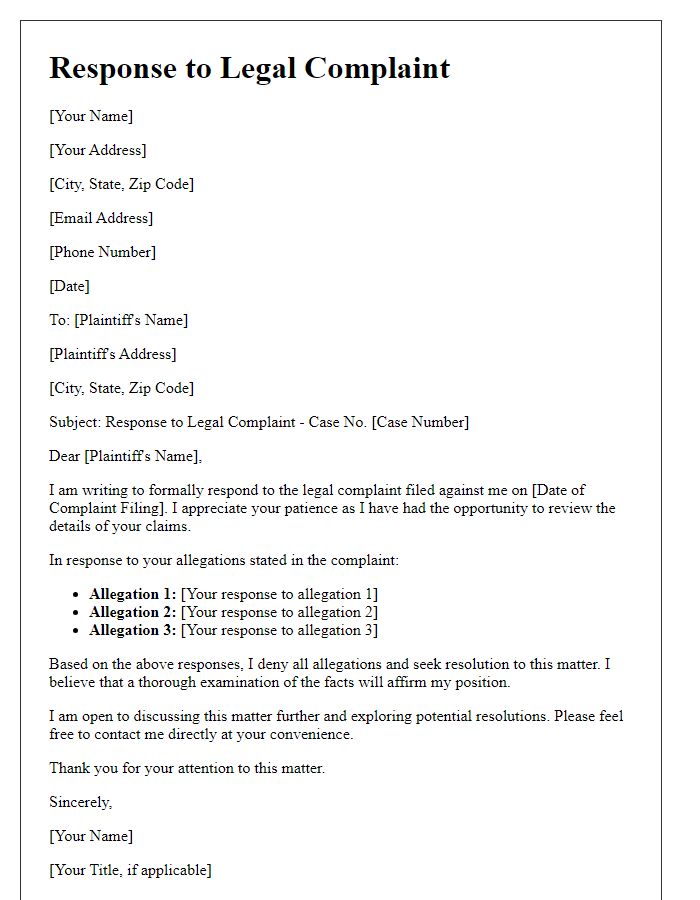
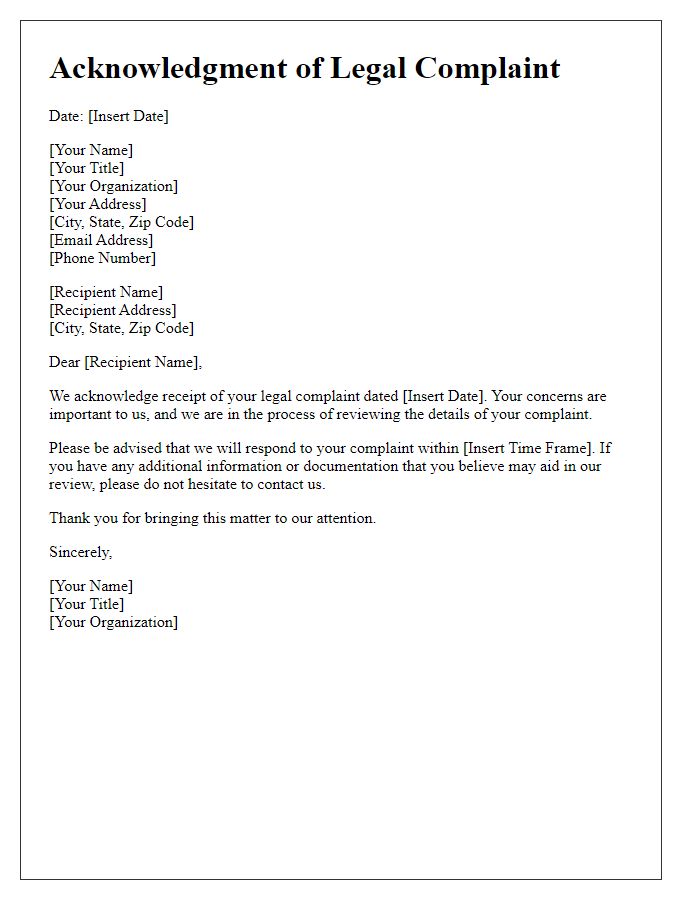
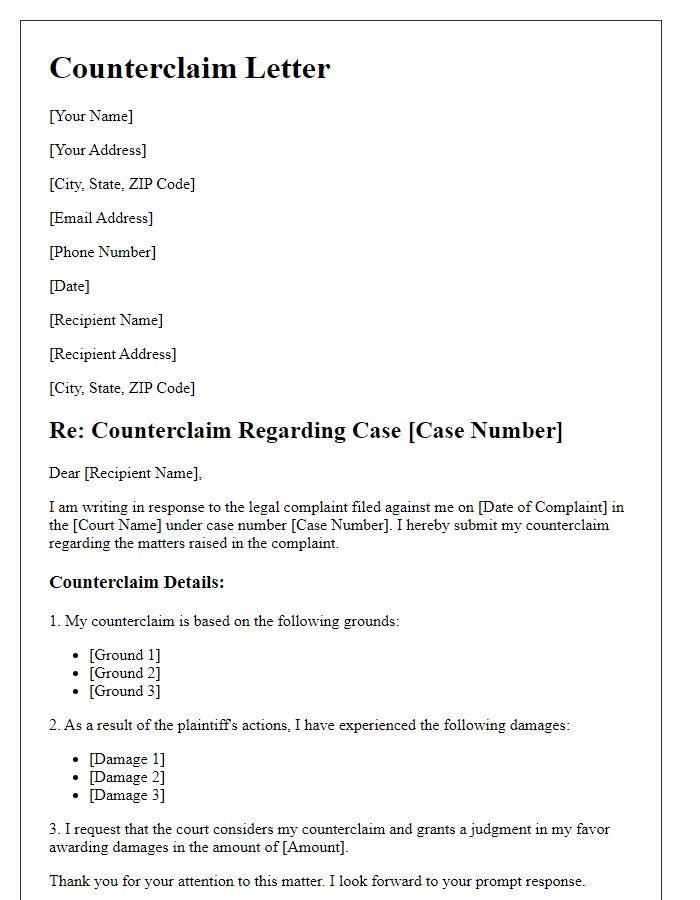
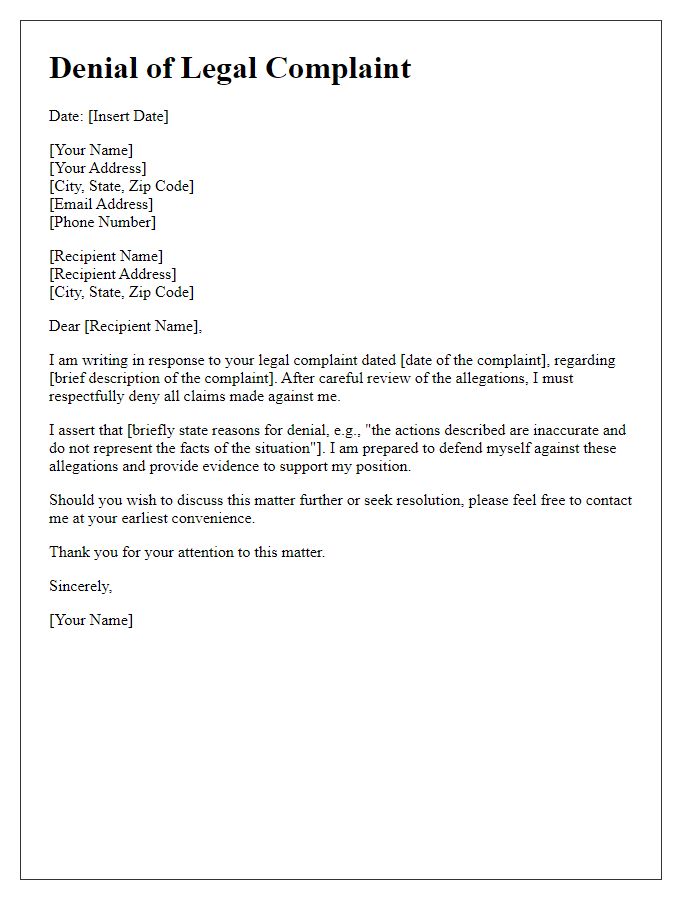
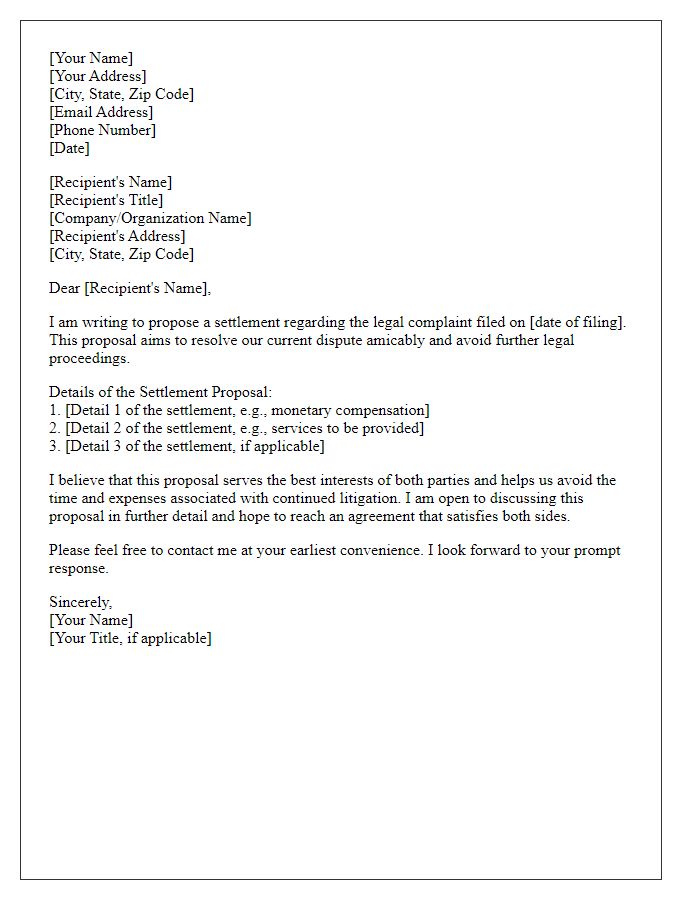


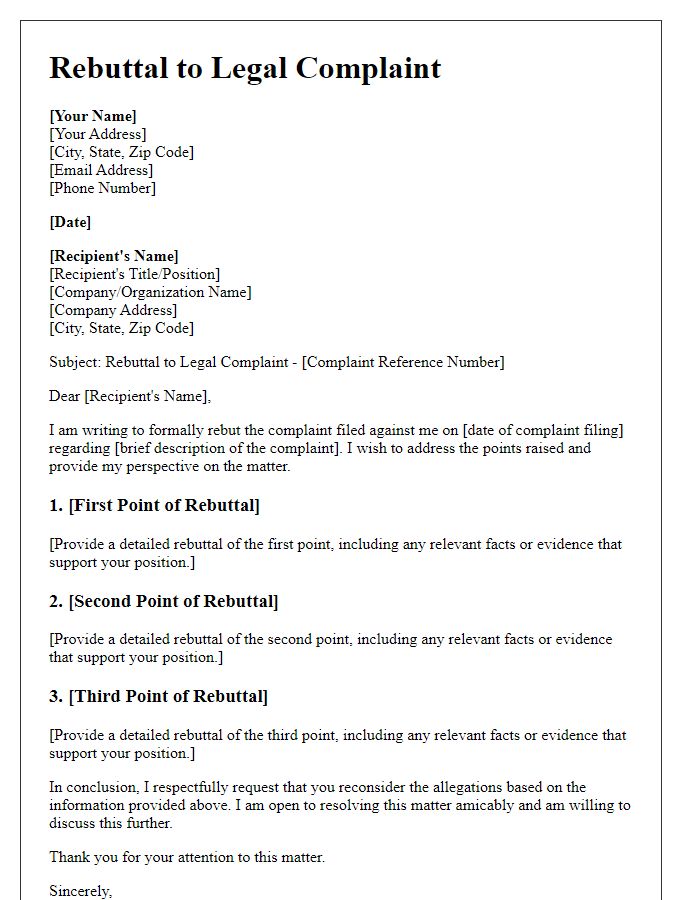
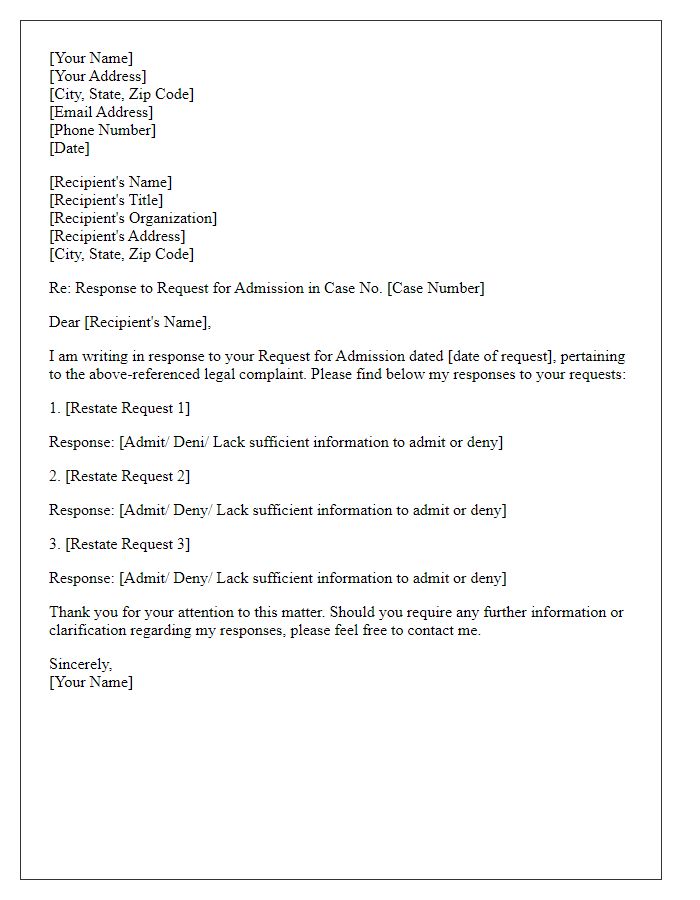

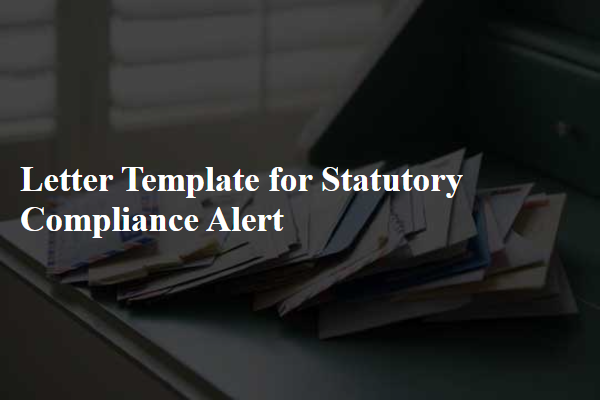
Comments